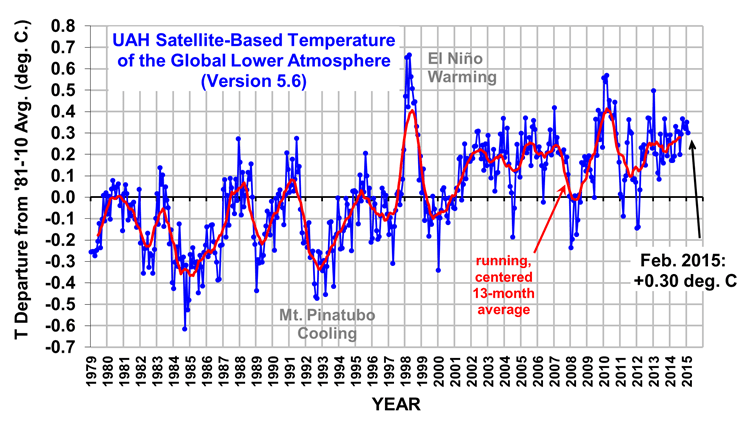Old Rocks
Diamond Member
The Version 5.6 global average lower tropospheric temperature (LT) anomaly for February, 2015 is +0.30 deg. C, down a little from the January 2015 value of +0.35 deg. C (click for full size version):

http://www.drroyspencer.com/2015/03/uah-global-temperature-update-for-feb-2015-0-30-deg-c/
Gotta love the lying bozos on this board.

http://www.drroyspencer.com/2015/03/uah-global-temperature-update-for-feb-2015-0-30-deg-c/
Gotta love the lying bozos on this board.



